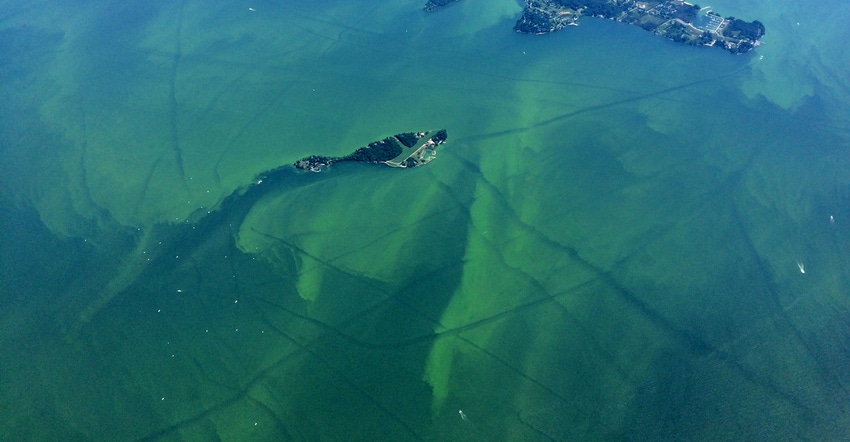December 4, 2019

Several research teams led by Ohio State University have concluded a three-year study evaluating the ability of agricultural management practices to reduce the phosphorus causing harmful blooms of algae in Lake Erie.
In 2012, the United States and Canada set the goal of reducing phosphorus entering the lake by 40%. Now, researchers have a better understanding of what management practices need to be implemented, and what research still needs to be done to meet these goals by 2025.
The majority of phosphorus entering Lake Erie originates from the Maumee River watershed. More than 85% of the phosphorus entering the lake comes from agricultural sources, such as fertilizer runoff. To address this, researchers are evaluating what ag management practices have the potential to reduce this phosphorus, while supporting farmers to maintain profitability.
“There’s a lot of edge-of-field work going on that identifies successful practices in single fields. But when we scale up and ask how many of those practices need to be adopted over a wide area like the Maumee River watershed, that’s where we turn to our models,” says Jay Martin, project co-leader for the recent study and a professor in OSU’s Department of Food, Agricultural and Biological Engineering (FABE).
Study used 5 models
The study, which was funded by the Ohio Department of Higher Education’s Harmful Algal Bloom Research Initiative, used five watershed models to help researchers determine the most effective approaches to combat algal blooms.
Just as local news meteorologists use models to forecast the weather, researchers use watershed models to project how different management techniques affect phosphorus entering Lake Erie. By layering five separate models over these practices, researchers are able to see the best solutions.
Solutions are aimed at meeting reduction targets for two forms of P: total phosphorus and dissolved reactive phosphorus. Each spring, levels of total phosphorus and dissolved reactive phosphorus affect the magnitude of harmful algal growth. Year-round levels of total phosphorus — which includes dissolved reactive phosphorus — lower oxygen levels in the lake and result in the annual “dead zone” in the central basin of Lake Erie.
Researchers worked with a team of stakeholders to determine what management practices to analyze with the models. The stakeholder group had wide representation from agricultural groups, government agencies, nongovernmental organizations and environmental groups. Together with researchers, these stakeholders helped determine what management practices and adoption rates were most likely to be feasible solutions to model.
“In this study, we wanted to be able to show policymakers a range of expectations if we implement certain conservation strategies,” says Margaret Kalcic, project co-leader and an assistant FABE professor. “Multiple models help us address uncertainty and gain confidence in our practices.”
Progress, but practices didn’t meet goals
Results from the study showed progress in reducing phosphorus that is required to decrease harmful algal growth. However, none of the modeled scenarios met the reduction goals for dissolved reactive phosphorus. These results point to the need to further increase adoption of existing practices and research alternative management practices, which is where researchers expect to focus their efforts next.
“With the types of practices available to the farming community, we can make stronger strides reducing total phosphorus than with dissolved reactive phosphorus,” Martin says. “In the future, we need to develop management processes that are more effective at managing dissolved reactive phosphorus — processes that hold back or filter water.”
The most promising scenarios called for a mix of in-field management, like cover crops and subsurface fertilizer placement; and the use of buffer strips to help filter field runoff. One mix of these practices met the reduction goal for total P.
The study also highlighted the importance of identifying sites where specific practices will have a higher potential of reducing phosphorus runoff. While this approach will result in accelerated gains in water quality and more efficient use of resources, it will require field-level assessments and consultation with producers.
It is also hoped that these results convey confidence to the public and farmers that properly combined management practices can make progress towards phosphorus reduction targets. Doing so should lead to an increase in adoption rates of effective practices and improve the ongoing harmful algal bloom problem in Lake Erie.
Source: Ohio State University Extension, which is solely responsible for the information provided and is wholly owned by the source. Informa Business Media and all its subsidiaries are not responsible for any of the content contained in this information asset.
You May Also Like




